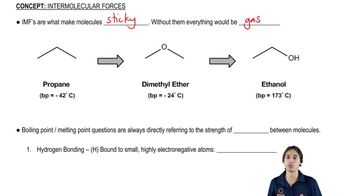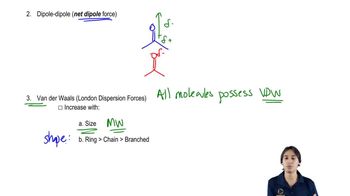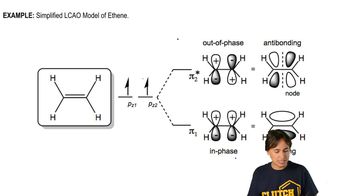Explain why
c. H2O (100 °C) has a higher boiling point than HF 120 °C2.
d. HF 120 °C2 has a higher boiling point than NH3 (-33 °C).
 Verified step by step guidance
Verified step by step guidance Verified video answer for a similar problem:
Verified video answer for a similar problem:



 3:08m
3:08mMaster How IMFs are related to melting and boiling points. with a bite sized video explanation from Johnny
Start learning